After a bit of a delay, we’re back with our third and final set of Staff Picks. David, Ink, Evan, and Jared rattle off their top three new anime titles of 2016 (that means retro releases are disqualified, though there were a lot of good ones this year). Taking a look at both the breadth of genres and the artistic ambition of these series and movies, it’s easy to see that 2016 was a pretty fantastic year for anime. Here’s to another one.
David Estrella
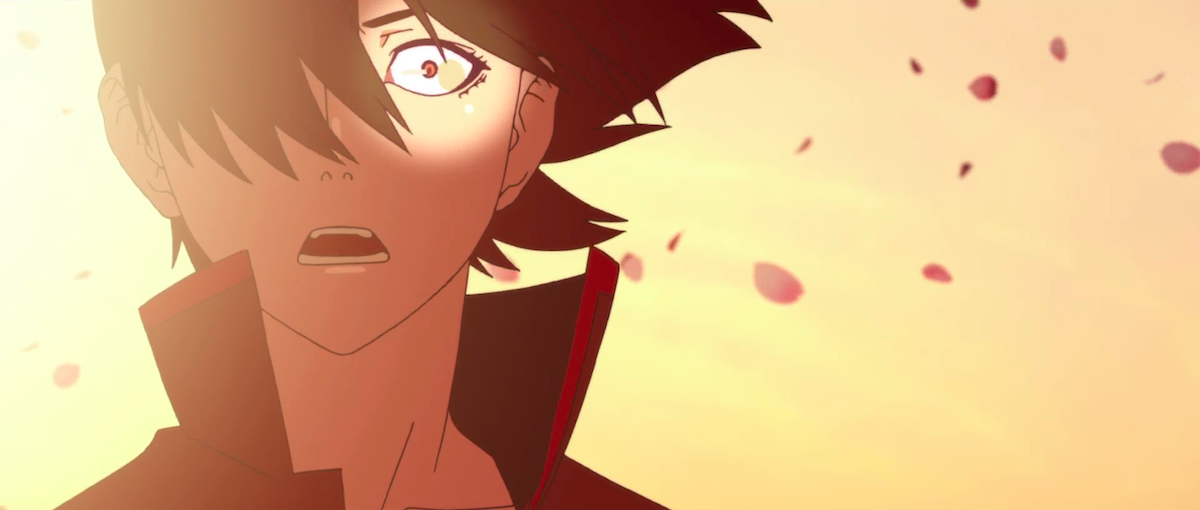
Kizumonogatari Parts One and Two
To no one’s surprise, Kizumonogatari Parts One and Two are the best anime of 2016. In all likelihood, Kizumonogatari Part Three will be the best anime of 2017, having missed the cut off by about six days. “Best Anime of 2017” is looking like a title defense without any promising contenders on the horizon, save for perhaps Makoto Shinkai’s runaway monster hit your name., staggering into the US a year after its heroic Japanese theatrical run like a favorite uncle that always arrives at the end of your birthday party. Will there be an anime that’s as impactful with the violence, as seductive with the visuals, and as hypnotically scripted as Kizumonogatari? Takeshi Koike’s Redline and its infamous “seven hand-drawn years” development cycle is perhaps the closest analogue to the experience of having to wait this long for a project that many assumed just wasn’t happening anymore. Well, Kizumonogatari did happen, I flew out to Japan to see it, to live and breathe it on opening day, and just that one hour runtime for the first part alone blew the doors out the theater. Everything after Kizumonogatari is an exercise in disappointment, an eternal trial for my commitment to the medium in this monochromatic post-Kizumonogatari world.
Ink
Picking three titles for AOTY (Anime of the Year) is nerve-racking when you consider the sheer number of series that debut (let alone continue) per season. For every title that deserves recognition for its animation, there’s another that’s got a great story, another that has great art, and another that’s of social value. And while it feels like any Sayo Yamamoto work should be included on principle alone, sometimes there’s just too few accommodating slots.
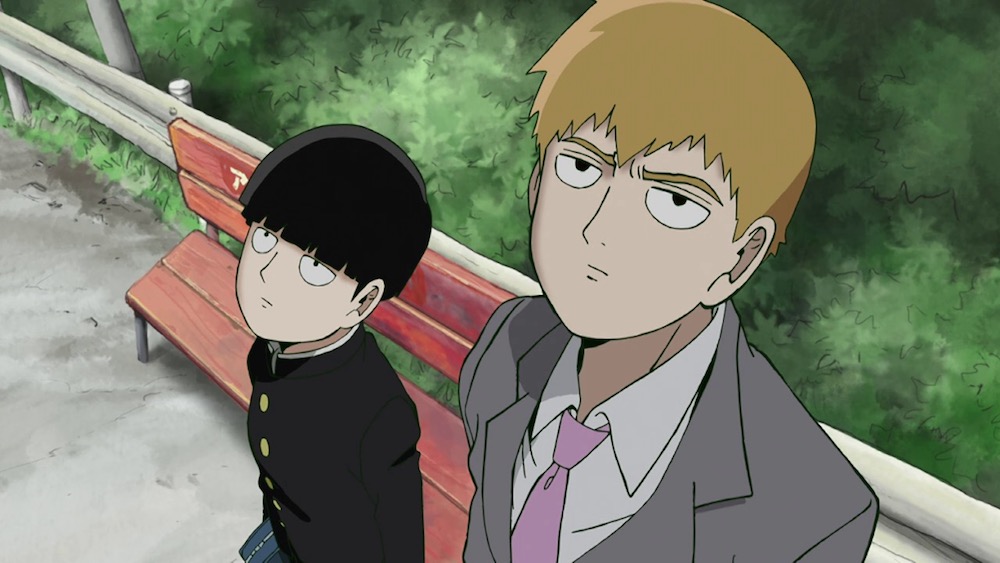
#3 Mob Psycho 100
I like stories that surprise, stories that upend or skew expected methods of execution or outcome. Most fans of Mob Psycho 100 will immediately cite the art and animation as its main draw, and that’s because there seems to be nothing else praiseworthy in the first two episodes. The story of an inept boss taking advantage of and credit for his employee’s true talents is a little too real to be funny and too overused to be engrossing, and the associated humor is as stale as the aforementioned concept. But what this series does to avoid that trench is turn the narrative away from that situation to focus on the main character’s inner turmoil, turn away again to focus on his relationship with his brother, and link everything together by heading down another avenue. The world expands organically and without contrivance. It’s a grand bit of storytelling, told with an unexpected tenderness spiced with laughter, under an umbrella of raw and powerful art and animation that’s portrayed some of the best action scenes this year.

#2 Keijo!!!!!!!!
It’s just about to wrap up for the season as I write this, so I’m probably a little biased, but this is the best damned anime comedy of 2016. Every single episode literally made me laugh out loud multiple times, and as a man who values the healing power of laughter, and given the ever-sinking shithole that is 2016, I can honestly say that this is a healing anime. On more than one occasion, I’ve elicited the concern of neighbors and housemate alike for my post-guffaw, out-of-breath wheezing/gasping. That’s because the show approaches a fictitious sport with earnest exuberance for the elaborate exaggerations within. That is to say Keijo!!!!!!!! takes itself seriously and reaps the benefit of humor through contrast. The show also manages to all but bench fanservice while being all about T&A, which is a rather incredible feat. That’s not to say this show is particularly empowering, but it knows how to make fun of and thereby negate its own offensiveness while being wildly entertaining with its absurdity. What I thought would surely be the worst of the season turned out to be one of the most enjoyable of the year.
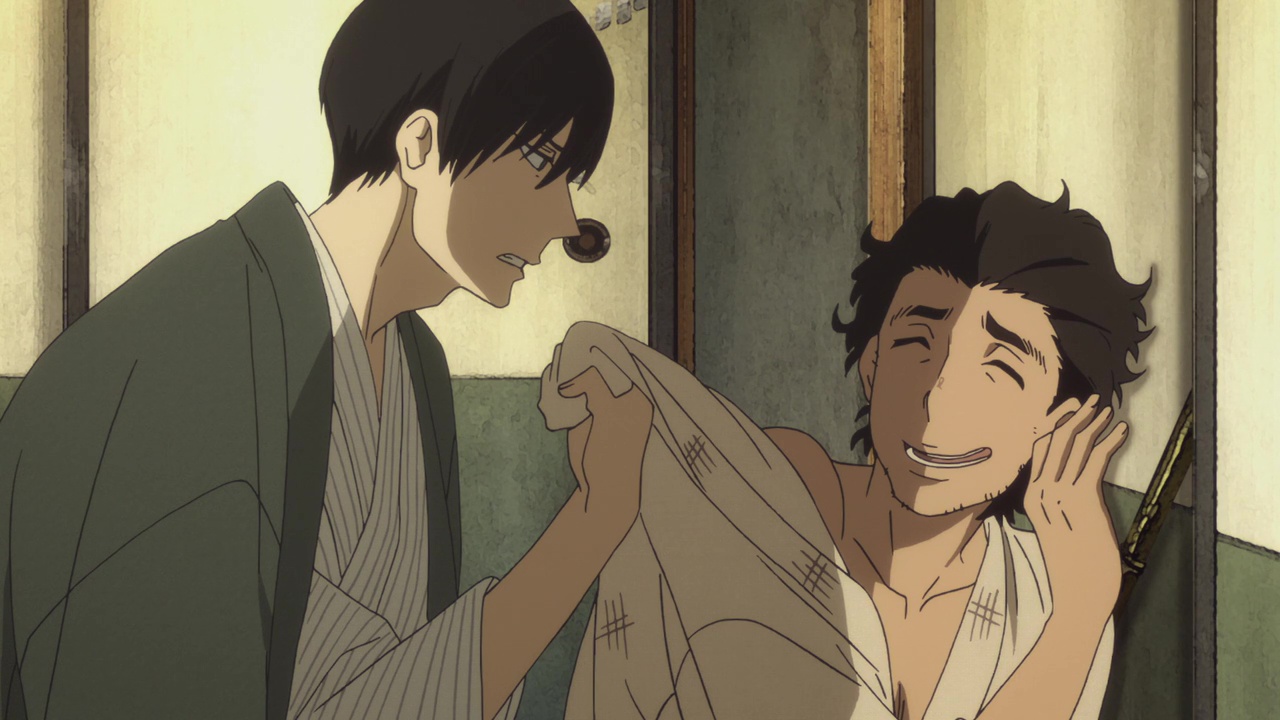
#1: Showa Genroku Rakugo Shinju
Brilliant in its staging and how that relates to story, characters, and concept, this Showa-era anime centers around two comedic storytelling practitioners who grow up like brothers and fight like them too. This show wows with the subtlety of its own storytelling and the storytelling capabilities of its VAs as rakugo performers. The level of detail in the character and background art, the dedication of trained camera focus, and degree of imaginative storyboarding of this period piece are also commendable. Set outside of traditional classrooms and featuring a large range of ages, this is also a great anime with which to introduce anime to people who don’t normally watch anime. It’s drama, pure and simple, told in an engrossing and visually appealing manner. I’ve heard of rakugo before via an anime comedy but didn’t realize that focusing on that art form and (the fictional lives of) its performers could be this interesting! For an in-depth discussion, listen to Episode 001 of the Oldtaku no Radio podcast. The second season airs in the winter 2017 season, so catch up quick!
Best Anime Short:
#3 Ojisan and Marshmallow
#2 Yamishibai S3
#1 To Be Hero
Best Anime We Never Got:
Konnichiwa Onara Gorou
Biggest Disappointment:
Flip Flappers
Evan Minto

#3: Erased
Originally considered by many as a shoe-in for Anime of the Year, Erased stumbling a bit at the finish line was enough to condemn it as a failure in the eyes of some fans. The series builds up a tense, time-traveling murder mystery in its first 11 episodes that the finale doesn’t quite deliver on, but the journey is so immaculately executed that it’s hard to dock it too many points. There’s so much to love in Erased that it’s hard to sum it all up: evocative cinematography, authentic depictions of grade-school friendships, nail-biting cliffhangers…. But what really stands out is the unexpected ability of director Tomohiko Ito (Sword Art Online) and A-1 Pictures to replicate the escalating tension and complex relationships of American “prestige” TV series like Breaking Bad and Mr. Robot. By the end, Erased may not weave quite as intricate a web as it seemingly sets out to, but along the way, it reminds us that TV anime is still capable of breaking into the sort of mature adult storytelling that has often been the exclusive purview of live-action TV.
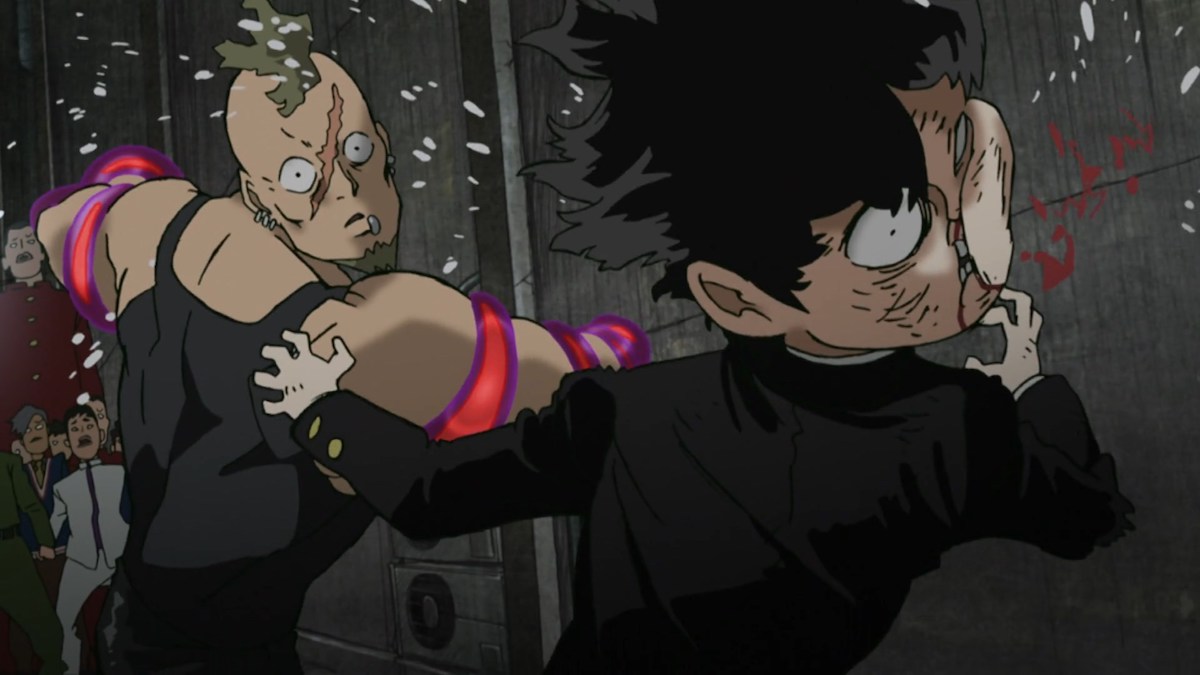
#2: Mob Psycho 100
Last year webcomic artist One burst onto the anime scene with the smash-hit animated version of One-Punch Man, but the anime was based on artist Yusuke Murata (Eyeshield 21)’s Shonen Jump version of the series (adapted from One’s original webcomic). The real test for One was his second anime adaptation, this time without the filter of Murata’s art. Appropriately, Mob Psycho 100 leaves behind One-Punch Man‘s grandiose action tendencies in favor of surprisingly heartfelt teenage soul-seeking, all while One maintains his off-kilter sense of humor and penchant for the grotesque. On top of that, Studio BONES delivers what might be some of their best work yet, as their animators attempt to one-up their coworker, Shingo Natsume, who directed the animator showcase that is One-Punch Man. The psychic powers in Mob create a kaleidoscopic world in which reality bends and distorts at the whim of its characters, who are themselves animated with wildly exaggerated expressions despite One’s remarkably simplistic designs. If One-Punch Man introduced One’s shockingly unique style to an anime world plagued by sameness, Mob Psycho 100 has cemented his place among this decade’s most essential new creators.
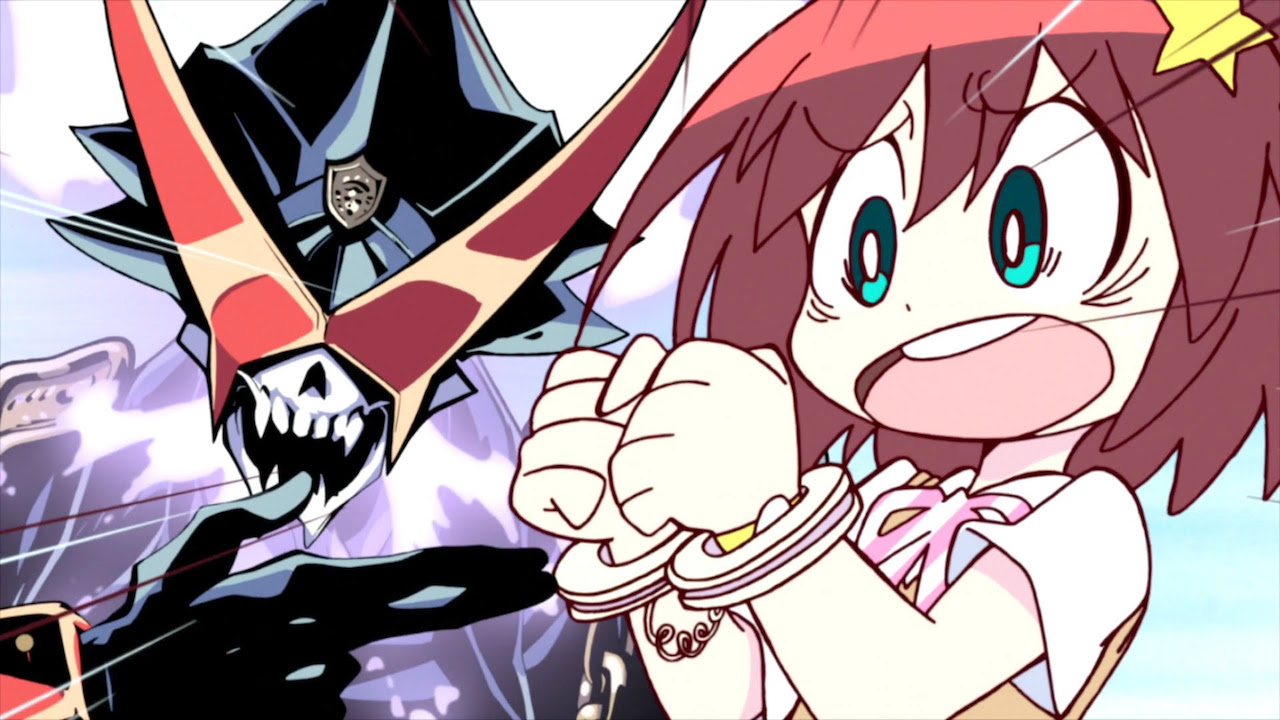
#1: Space Patrol Luluco
In a shocking twist, a series featuring Inferno Cop made my Anime Staff Picks list! Space Patrol Luluco is a shameless work of self-congratulation, combining characters and settings from Studio Trigger’s entire catalog into a mashup which clearly draws inspiration, at least in part, from the Marvel comics that director Hiroyuki Imaishi & co. love so much. That this feat has so rarely been attempted in anime should come as no surprise to anyone who’s been keeping up with Trigger; they’ve consistently pushed the envelope in anime, whether its lo-fi comedy like Inferno Cop or Disney-esque family-friendly animation like Little Witch Academia. Not only does Luluco feature Imaishi’s trademark breakneck dialogue and manic animation, but it builds nicely into something with real heart to it — not unlike Kill la Kill (though KLK screenwriter Kazuki Nakashima sat this project out). Peppering the core story, itself full of nonsense about space shoplifting and black holes, are cameos and references from every Trigger project so far, including Kill la Kill and Little Witch Academia and even Ninja Slayer and Kiznaiver. But it’s the unrelenting energy and clear creative passion that makes Luluco shine so brightly in a sea of phoned-in anime cash grabs. Long live Studio Trigger!
Jared Nelson
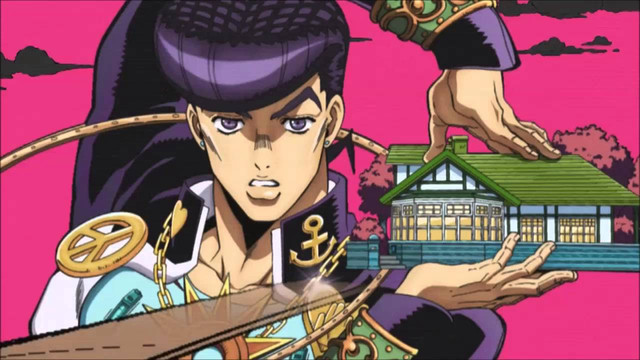
#3: JoJo’s Bizarre Adventure Part 4: Diamond is Unbreakable
David Production hasn’t gotten anywhere near the credit they deserve for their work on JoJo’s Bizarre Adventure Part 4: Diamond is Unbreakable. I never thought I’d be living in a time where people could grow accustomed to having anime adaptations of Hirohiko Araki’s legendary manga. In my opinion, Part 4 stands as the best JoJo anime yet made. While Part 3 had an epic, globetrotting scale and told of an ancient evil and the battle to end a family curse. With Part 4, Araki went in the opposite direction, exploring the lives of the residents in the town of Morioh. A lesser creator may have failed to exceed the iconic Part 3, but Araki not only delivered, he surpassed himself. Part 4’s stories and characters show Araki at his most creative yet. The Stand users in this series have extraordinarily imaginative powers that lead to sometimes zany, sometimes dramatic stories that leaving you guessing what could happen next. The craziness rose to a whole new level and capturing Araki’s genius was a monumental task, but the animation staff at David Production did a marvelous job of bringing the crazy, noisy, bizarre town of Morioh to life. It’s one thing to create a work of genius, it’s entirely another to adapt the work of a genius and heighten its impact even further. Diamond is Unbreakable deserves a spot as one of the best anime of 2016.
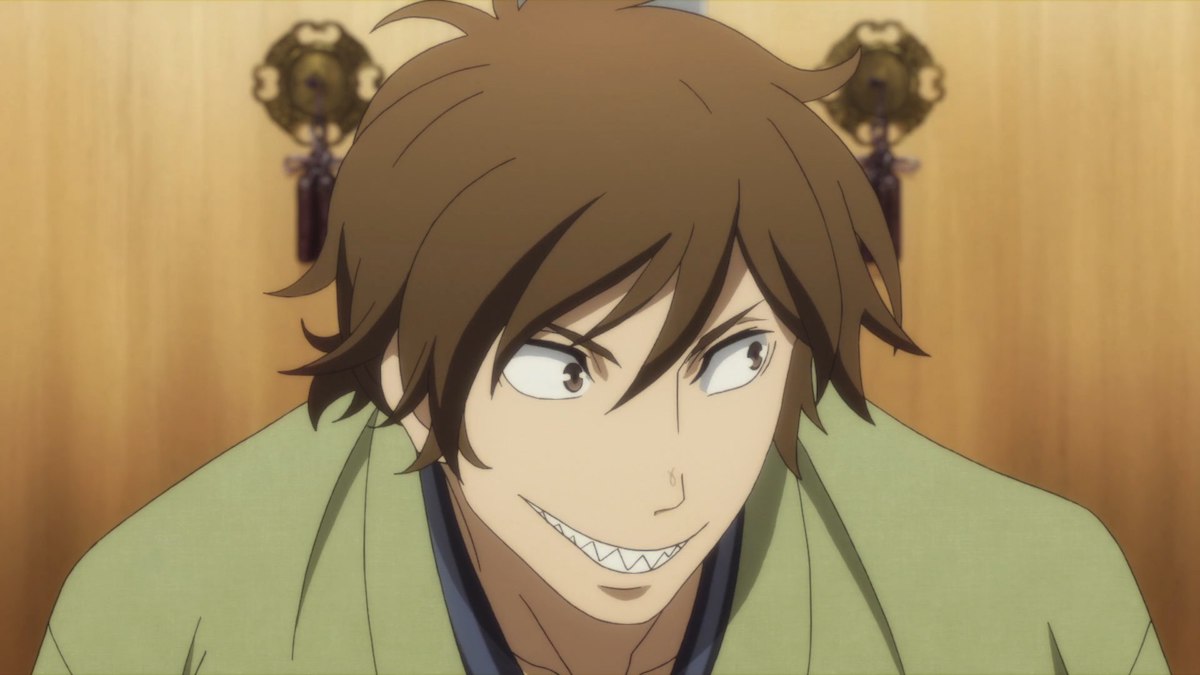
#2: Showa Genroku Rakugo Shinjuu
Ink and I covered this show extensively in our (extremely long) debut episode of Oldtaku no Radio because it blew us both away for a whole host of reasons. From its debut episode, Showa Genroku Rakugo Shinjuu stood apart as a mature, artful tale worthy of celebration. In a time where nearly all anime seem to revolve around adolescent concerns it was so refreshing to see a (period!) drama aimed at adults and featuring adult characters. It introduced the Japanese art of Rakugo to a broader audience and its depiction of Rakugo storytelling could itself be a masterclass in storytelling. Not only did the Rakugo performances leave me spellbound in and of themselves, they also advanced the larger plot of the show and the character arcs of the performers all at the same time. I’ve never seen layered storytelling so skillfully interwoven throughout an anime. Rakugo also depicted nuanced, complex relationships between its principal characters, particularly Shin (Sukeroku) and Bon (Kikuhiko/Yakumo the 8th). Showa Genroku Rakugo Shinjuu stands out as a compelling story of passion, drama, and tragedy. After seeing it, I was convinced it would be my Anime of the Year, and I can’t wait to see its second season. It looked like 2016 would pass without any other show even coming close to matching it…then Sayo Yamamoto said “hold my beer and watch this.” Well, probably not. But that’s sorta what happened.

#1: Yuri!!! on Ice
Yuri!!! on Ice took anime by storm this Fall and it’s my pick as Anime of the Year 2016. This show has all the hallmarks of a strong show: memorable characters, a great score, and excellent storytelling. How it uses all those qualities sets it above all the rest. Yuri’s personal growth over the course of the series results in a very satisfying character arc. You can’t help but cheer Yuri on as he breaks through the barriers of his own self-doubt to reach greater heights as a competitor, artist, and person. As the series progresses we learn more about each skater’s motivations while advancing the overall plot at that same time. It turns out figure skating is a perfect vehicle for this kind of layered storytelling!
Like Diamond is Unbreakable, Yuri on Ice has memorable characters. Like Showa Rakugo, Yuri on Ice portrays nuanced dramatic relationships between its three leading characters. But unlike the other two, Yuri on Ice combines all of these qualities into one show, a show that isn’t based on prior work, but an original work from Sayo Yamamoto and Mitsurou Kubo. But above all those reasons, this show is an important show because it prominently and proudly features a healthy, open homosexual relationship. Yuri and Victor’s relationship isn’t played up for laughs or just suggested, their relationship is the heart of the show. So many times in the past, we’ve seen LGBTQ characters in anime exist simply as a punchline or as degenerates. With Yuri on Ice, we finally have a mainstream hit that treats gay men with the respect they deserve. Yuri on Ice is the best show of 2016 for a host of reasons and I won’t be the first to say so. I’m just happy that I get to say it at all. It’s definitely a show born to make history.
That’s it for our Staff Picks. What are some of your favorite anime of 2016?
Check out our picks for manga and video games too!
